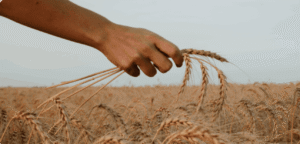Friday, 3 October 2025
West and Central Africa faces deepening food crisis
This number is set to rise to 52.7 million by mid-2025, including 3.4 million people facing emergency levels of hunger Over 40 million people across West and Central Africa struggle…

This number is set to rise to 52.7 million by mid-2025, including 3.4 million people facing emergency levels of hunger
Over 40 million people across West and Central Africa struggle to feed themselves during the 2024 post-harvest season. This number is set to rise to 52.7 million by mid-2025, including 3.4 million people facing emergency levels of hunger (IPC/CH Phase 4) according to a new Cadre Harmonisé food security analysis released this month.
Despite a marginal drop in the number of acutely food insecure people compared to last year – linked to improved security and above-average rainfall in some parts of the Sahel, food insecurity is worsening. The number of people facing emergency levels of hunger (IPC/CH Phase 4) has surged by 70 per cent during the post-harvest season and 22 per cent during the June-August 2025 lean season.
Countries most affected include Nigeria, Cameroon, and Chad – which together account for well over half of the total food-insecure population – while forcibly displaced people bear the brunt of the food crisis. This situation underscores the urgent need for enhanced humanitarian action and long-term solutions that effectively tackle the food crisis engulfing the Sahel and the Lake Chad region.
“The vicious cycle of hunger in West and Central Africa can be broken, but it requires a fundamental shift in our approach,” said Margot van der Velden, WFP’s Regional Director for Western Africa. “We need timely, flexible, and predictable funding to reach crisis-affected people with lifesaving assistance, and massive investments in preparedness, anticipatory action and resilience-building to empower communities and reduce humanitarian needs.”
Food insecurity in the region is driven by conflict, displacement, economic instability, and severe climate shocks. Over 10 million people have been forcibly displaced in the area, with significant numbers in Burkina Faso, Chad, Cameroon, Mauritania, Niger, and Nigeria. Forcibly displaced people are often cut off from their fields and grazing areas, making farming impossible for food security. Furthermore, climate shocks – especially the deadly floods this year that affected six million people – claim lives and destroy livelihoods, disrupting agricultural productivity.
Technology
Arya.ag wins SmartAG Award 2025 for climate-resilient farming solutions
Oct 01, 2025 | Awards
Ecolab launches Ecolab CIP IQ
Sep 30, 2025 | Company News
Recur Software expands into food processing with acquisition of Innova Zones
Sep 30, 2025 | Company News
Food Testing
Arya.ag wins SmartAG Award 2025 for climate-resilient farming solutions
Oct 01, 2025 | Awards
Reducing Testing Time from 15 Days to 72 Hours: bioMérieux Leads the Way
Sep 19, 2025 | Food Safety and Testing
MycoTWIN boosts Türkiye’s Mycotoxin research with EU support
Sep 17, 2025 | Europe
More Popular
Glenmorangie unveils exclusive festive pack in India
Oct 03, 2025 | Beverages
Lallemand Health Solutions looks to steal spotlight at SupplySide Global
Oct 03, 2025 | Company News
Prinova highlights great-tasting, on-trend functional solutions at SupplySide Global
Oct 03, 2025 | Beverages





